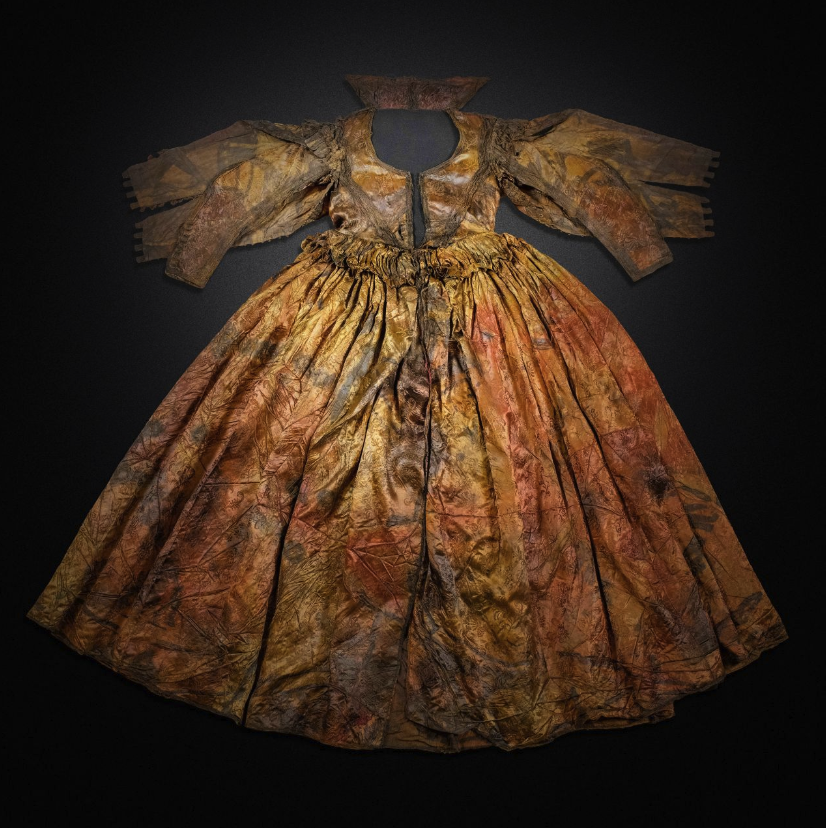Image from Museum Kaap Skil: The Palmwood Wreck, a Dutch merchant ship that wrecked off the coast of Texel in 1660, was full of luxury goods. Divers retrieved them, and after years of study, the finds are on display at the Netherlands’ Museum Kaap Skil. One of the most striking discoveries was a virtually intact silk satin dress with a woven floral motif.
Here is an article by Ashley Strickland on CNN (Published 11:16 AM EST, Fri February 17, 2023) that was sent to me by Frank Noga (Society member #1) from Eastlake, Ohio. I found it interesting in that it discusses a Dutch shipwreck (known as the Palmwood Wreck) that sank in 1660. This was thirty-eight years after the Atocha (1622) and fifty years before the loss of the 1715 Fleet. So, it was almost midway between these two historic maritime disasters. It is likely that the type of luxury items found on the Palmwood Wreck were the same type still in use at the time that the 1715 Fleet was lost. This illustrates how shipwrecks are themselves a sort of time capsule. The contents of the wreck are frozen in time. Like a broken watch, time has stopped. The contents remain just as they were when they were lost. In the case of the Palmwood Wreck actual clothing was recovered. Two dresses (actually gowns) found in a trunk survived for three and a half centuries underwater. This is remarkable in and of itself. Both gowns came from the same trunk, and most likely were owned by the same person. One was intended for everyday wear but the other was a silver wedding gown. Did the owner ever get to wear it? Did she even survive? We will never know, but the haunting reminder of her existence can be appreciated. The clothes found on this wreck bear an eerie resemblance to the clothes that were recovered from the wreck site of the S.S. Central America which sank in 1857. Although separated by almost two hundred years and thousands of miles, both of these wrecks tell us something about the era when they were lost and the people who suffered the misfortune of leaving behind their possessions for future historians.
